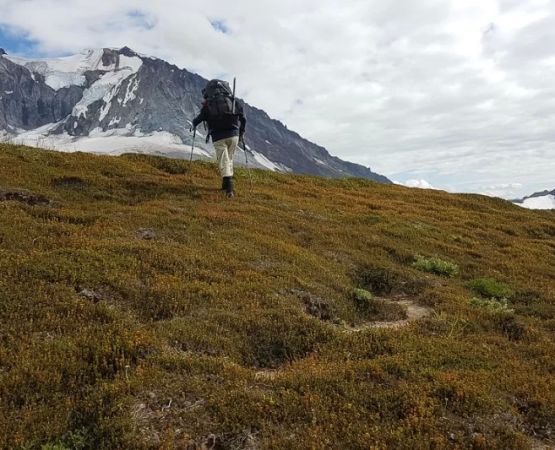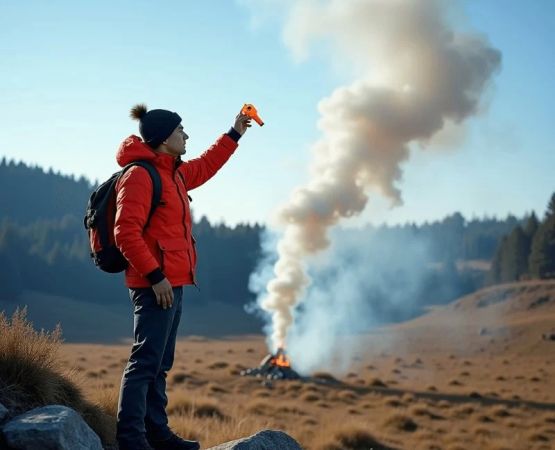- 1-Understanding-Sustainable-Camping
- 2-Planning-Your-Sustainable-Camping-Trip
- 3-Minimizing-Environmental-Impact
- 4-Practicing-Leave-No-Trace-Principles
- 5-Choosing-Eco-Friendly-Gear
- 6-Local-Examples-of-Sustainable-Camping
1. Understanding Sustainable Camping in the USA
Sustainable camping is a growing movement that encourages outdoor enthusiasts to enjoy nature while minimizing their environmental footprint. In the USA, with its vast and diverse wilderness, practicing sustainability while camping is crucial to preserving these natural landscapes for future generations. Sustainable camping means more than just reducing trash; it involves thoughtful planning, respecting wildlife, and protecting ecosystems.
As more people embrace camping, the risk of environmental degradation rises. Popular national parks and campgrounds can suffer from soil erosion, waste pollution, and disturbance to wildlife habitats if campers are careless. Sustainable camping aims to balance the joy of outdoor experiences with the responsibility of conservation. Understanding this balance is the foundation of how to camp sustainably in USA environments, whether in dense forests, deserts, or mountain ranges.
Being aware of the ecological sensitivity of each location helps campers make informed decisions about their activities and how to lessen their impact.
2. Planning Your Sustainable Camping Trip with Care
Proper planning is essential to camp sustainably. Before heading out, research the specific rules and guidelines of your chosen campsite or national park. Many protected areas in the USA have regulations designed to protect wildlife and preserve natural resources. Understanding these rules can prevent accidental harm and help you prepare accordingly.
Planning includes selecting campsites that minimize disturbance to vegetation and soil, choosing off-peak times to reduce overcrowding, and preparing a packing list that emphasizes reusable and eco-friendly items. For example, packing meals in reusable containers reduces waste, while bringing biodegradable soap avoids contaminating water sources.
Planning your water use is equally important; many areas face water scarcity, and conserving water at campsites helps sustain the ecosystem. Advance planning also means knowing how to properly dispose of waste, or better yet, carry out all your trash.
3. Minimizing Environmental Impact While Camping
When camping, every small action can affect the environment. To camp sustainably, minimize your impact by sticking to designated trails and campsites to avoid damaging plants and disrupting animal habitats. Avoid creating new fire pits or digging trenches around your tent as these actions can cause erosion and scar the landscape.
Using camp stoves instead of open fires reduces the risk of wildfires and pollution. When fires are permitted, use established fire rings, keep fires small, and ensure they are fully extinguished before leaving. Limiting noise pollution preserves the tranquility of natural settings and respects wildlife behavior.
Consider your interaction with wildlife carefully; do not feed animals or leave food scraps as this disrupts their natural habits and can create dangerous dependencies.
4. Practicing Leave No Trace Principles
The Leave No Trace (LNT) principles provide a widely accepted framework for sustainable camping. These seven principles emphasize planning ahead, traveling and camping on durable surfaces, disposing of waste properly, leaving what you find, minimizing campfire impacts, respecting wildlife, and being considerate of other visitors.
Following LNT helps protect the environment and ensures that natural areas remain pristine for others. For example, packing out all trash, including biodegradable items, prevents litter and pollution. Respecting other campers by keeping noise levels down and maintaining a clean campsite fosters a positive experience for everyone.
Many campsites and parks actively promote LNT, and campers who embrace these principles contribute directly to the long-term health of America's wilderness.
5. Choosing Eco-Friendly Camping Gear
The gear you bring can significantly influence your sustainable camping impact. Opt for equipment made from sustainable or recycled materials and avoid single-use plastics. Lightweight and durable gear reduces waste and environmental strain.
Reusable water bottles, solar-powered lanterns, and eco-friendly sleeping pads exemplify gear that supports sustainable practices. Additionally, selecting tents and sleeping bags designed for longevity reduces the frequency of replacements, further cutting down environmental impact.
Many brands now prioritize sustainability, offering products certified for low environmental impact. Investing in such gear aligns your camping habits with broader conservation goals.
6. Local Examples and Personal Stories of Sustainable Camping
One inspiring example of sustainable camping comes from Pine Cliff Resort, a location dedicated to preserving natural beauty while offering high-quality camping experiences. Campers there share stories of hiking with minimal waste, participating in local conservation efforts, and enjoying nature respectfully.
For instance, a family visiting Pine Cliff chose to bring refillable containers and solar chargers, reducing their plastic use and energy consumption. Their efforts made the trip not only enjoyable but educational for their children, instilling a lifelong respect for nature.
These real-life stories demonstrate how thoughtful preparation and conscious habits can transform camping into a meaningful act of environmental stewardship. Pine Cliff Resort and similar locations provide resources and guidance to campers looking to embrace sustainability fully.






